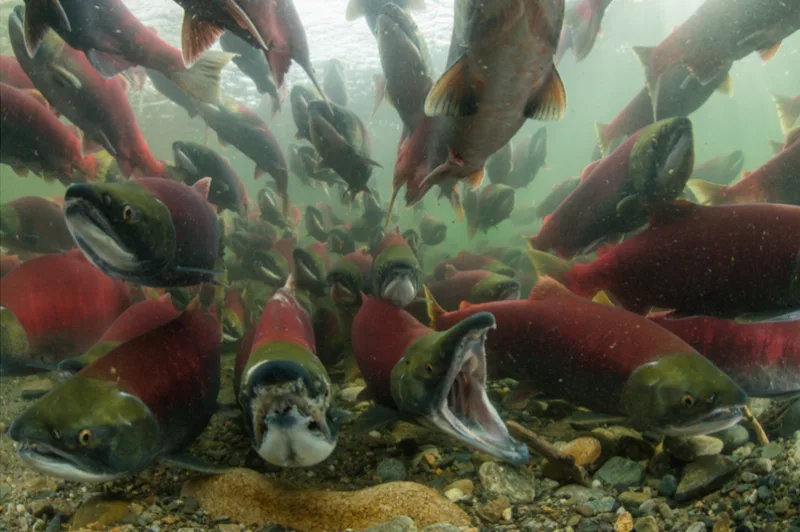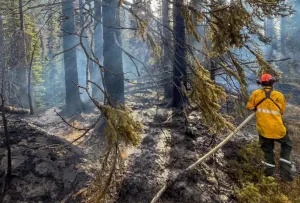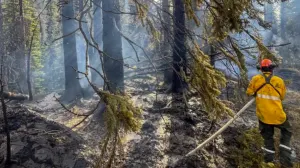
Female salmon dying more than twice as much as male salmon in B.C., study says
Mortality among females en route to spawning grounds was an average of 2.1 times that of males, and up to eight times more at the upper end of the scale, the UBC study says.
It’s hard to think of the great outdoors of British Columbia without an image of its mighty rivers, frothing with whitewater and teeming with salmon, destined for their annual spawning grounds.
But as those waters warm and other pressures close in, the journey’s toll is hitting female salmon harder, according to a new study from the University of British Columbia, which looked at 30 years of impacts on several species endemic to the province.
“What we discovered from study to study, and it was very consistent, was when the migration conditions got difficult –– for example, high flow rates, high temperatures, extra handling of the fish –– that females perished at at least twice, if not higher, the rate than males,” Dr. Scott Hinch, lead researcher and head of the Pacific Salmon Ecology and Conservation Laboratory at UBC, told The Weather Network.
The research, published in the Canadian Journal of Fisheries and Aquatic Sciences, was based on an analysis of 19 studies that included a mix of lab and field work. Mortality among females en route to spawning grounds was an average of 2.1 times that of males, and up to eight times more at the upper end of the scale.

The UBC study found female salmon are dying en route to spawning grounds at a rate of at least twice that of males, and in some cases as much as eight times as much. Photo: migrating sockeye salmon, courtesy David Hinch/UBC.
That discrepancy has accelerated in recent years, the researchers say: While counts in the 1930s, and as recently in the 1990s, found females outnumbered males in their spawning grounds, few females were evident from the 2000s onward.
Hinch says there are a few theories as to why female salmon are more vulnerable to heightened stresses, and the likeliest factors are to do with their cardiovascular systems relative to males.
“The females tend to have smaller hearts, higher heart rates, and generally a lower cardiac capacity, so they don’t recover as well from strenuous activity that might involve swimming at high speeds in faster water, or swimming at higher temperatures,” Hinch says.
That’s not just a problem for the occasional hiker hoping to wet a line. Salmon are big business in B.C., supporting around 8,000 jobs and raking in $200 million in tax revenue yearly. Recreational fishing has an economic impact as high as $1 billion, and the salmon are crucial to First Nations’ culture and food security.
The researchers say there are a few things that can be done to make the migration easier on female salmon, such as adjusting harvest rates and making sure migration routes have fewer obstacles.
WATCH BELOW: FISH MAKE HUGE LEAPS TO MAKE IT UP THE SALMON LADDER
In one example, Hinch’s team, working with B.C. Hydro and local First Nations, proposed some adjustments to the Seton River Dam and Fishway near Lillooet, with favourable results.
“It turns out, when we made some small changes to where the water came from, indeed, both sexes benefited,” Hinch says.
However, Hinch said such measures, on their own, won’t be enough: In the long run, so long as waters warm as climate change progresses, mortality rates will continue to trend upward.











